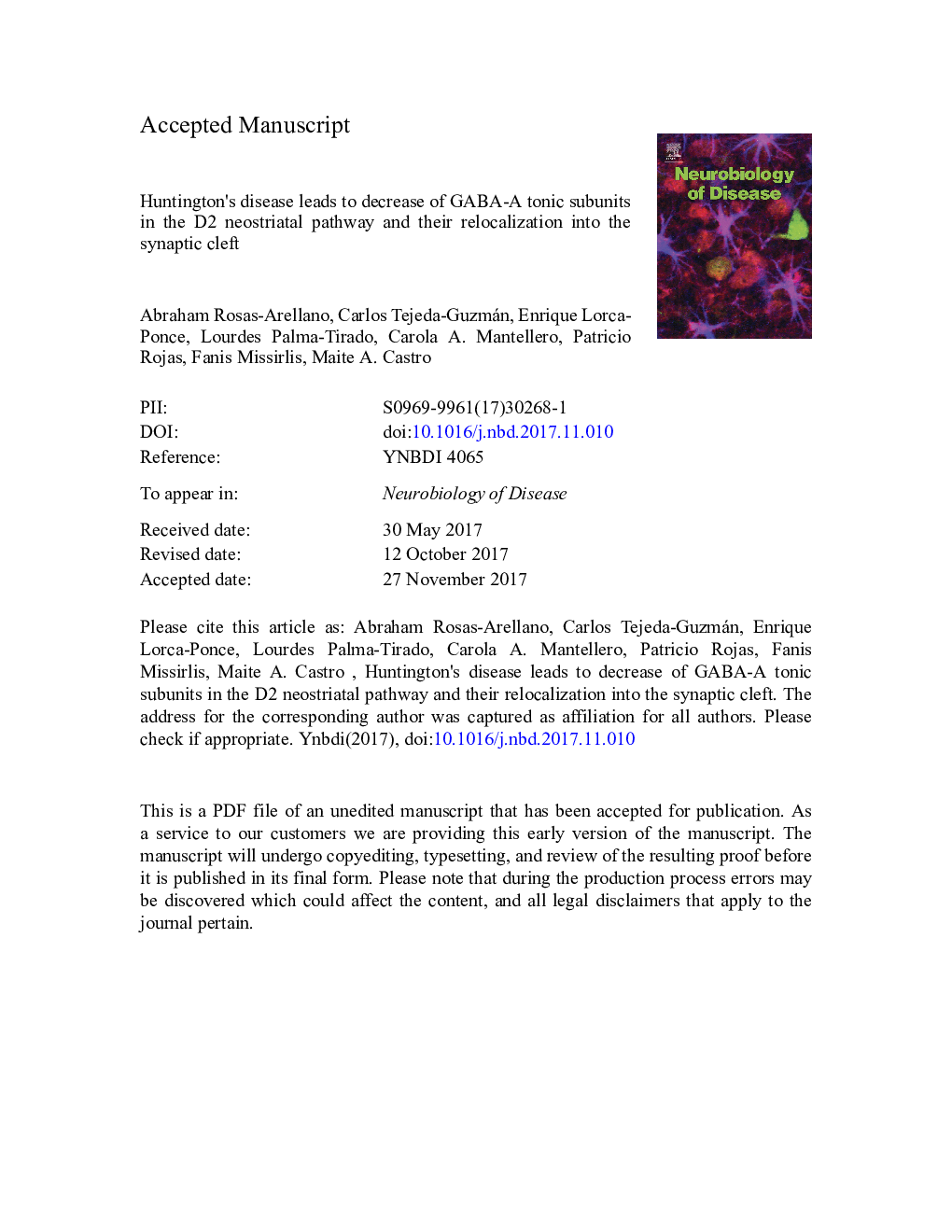| Article ID | Journal | Published Year | Pages | File Type |
|---|---|---|---|---|
| 8686450 | Neurobiology of Disease | 2018 | 32 Pages |
Abstract
GABA is a widely distributed inhibitory neurotransmitter. GABA-A receptors are hetero-pentameric channels assembled in multiple combinations from 19 available subunits; this diversity mediates phasic and tonic inhibitory synaptic potentials. Whereas GABA-A phasic receptors are located within the synaptic cleft, GABA-A tonic receptors are found peri- or extra-synaptically, where they are activated by diffusion of synaptic GABA release. In the neostriatum, GABA-A tonic subunits are present in the D2 medium-size spiny neurons. Since early impairment of these neurons is observed in Huntington's disease, we determined the ultrastructural localization of GABA-A-α5, -β3, -δ, -Ï2 and, for the first time, of GABA-A-Ï3 subunits, in the D2 pathway of the YAC128 murine model of Huntington's disease at various stages of disease progression. We report mislocalization of all five subunits from peri- and extra-synaptic spaces into the synaptic clefts of YAC128 mice, present in diseased mice as early as 6 months-old. The synaptic localization of GABA-A tonic receptors correlated with increased sensitivity to pharmacologic antagonists during extracellular electrophysiological recordings in neostriatal slices. Finally, the association of GABA-A tonic receptors with the D2 pathway in 6-month-old mice was largely lost at 12 months of age.
Keywords
Related Topics
Life Sciences
Neuroscience
Neurology
Authors
Abraham Rosas-Arellano, Carlos Tejeda-Guzmán, Enrique Lorca-Ponce, Lourdes Palma-Tirado, Carola A. Mantellero, Patricio Rojas, Fanis Missirlis, Maite A. Castro,
